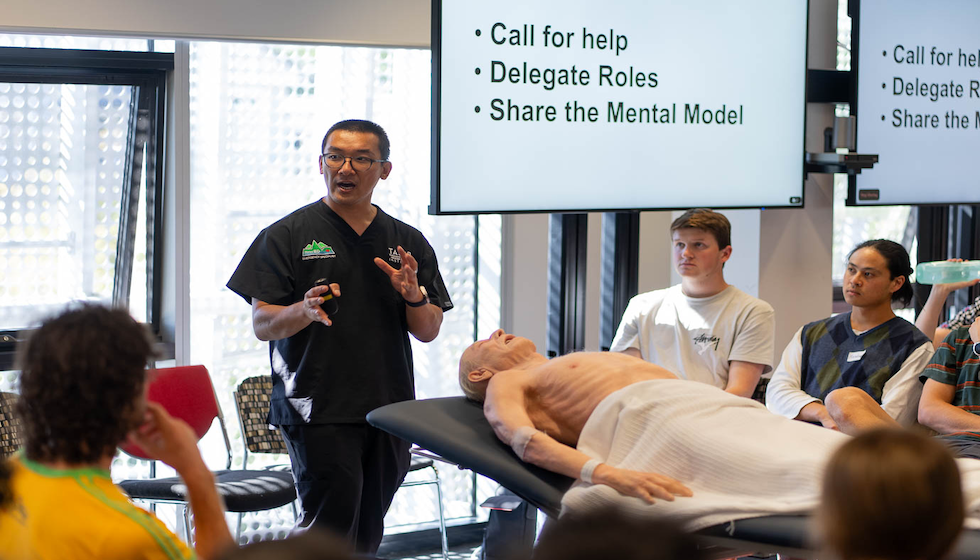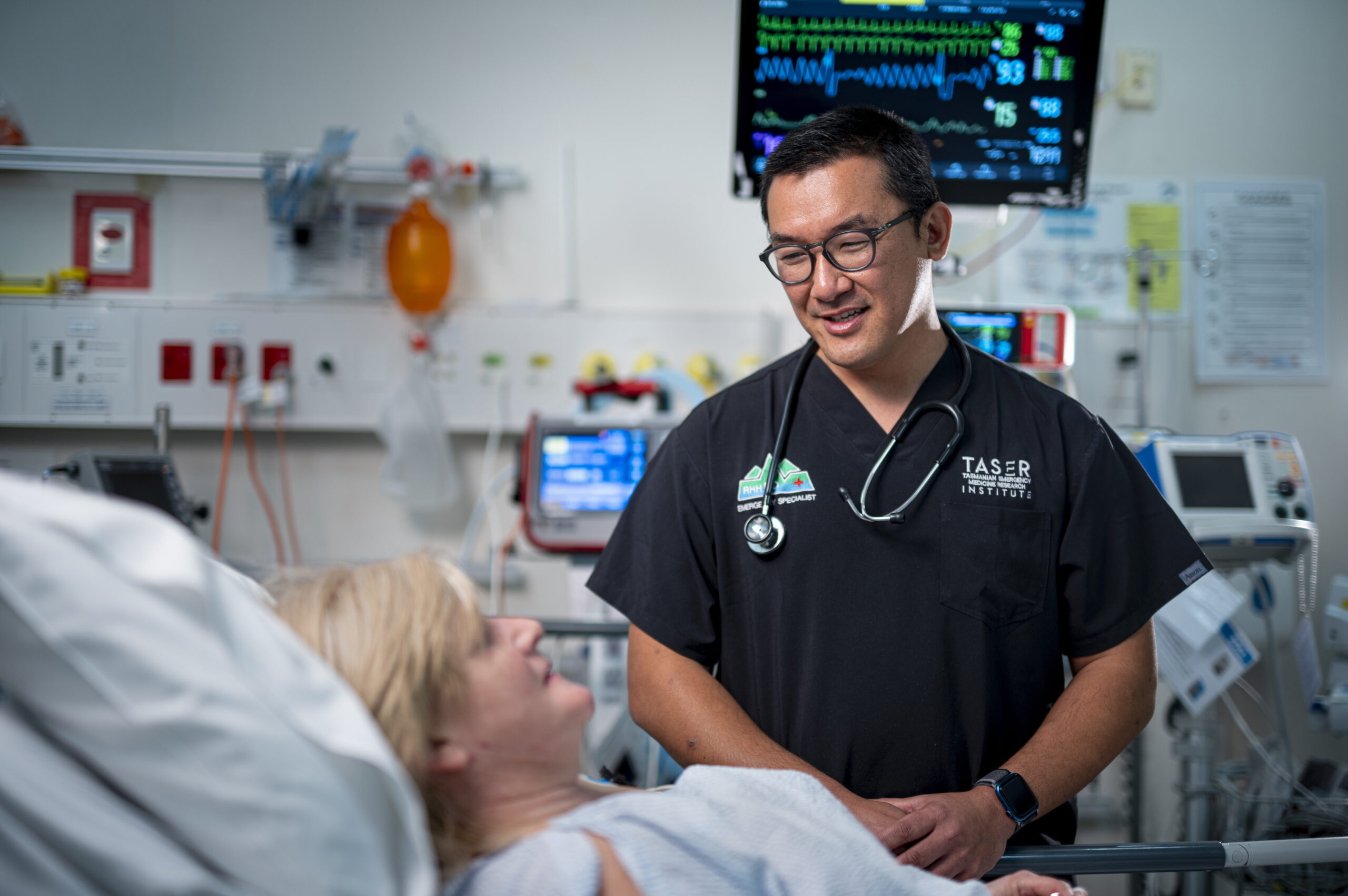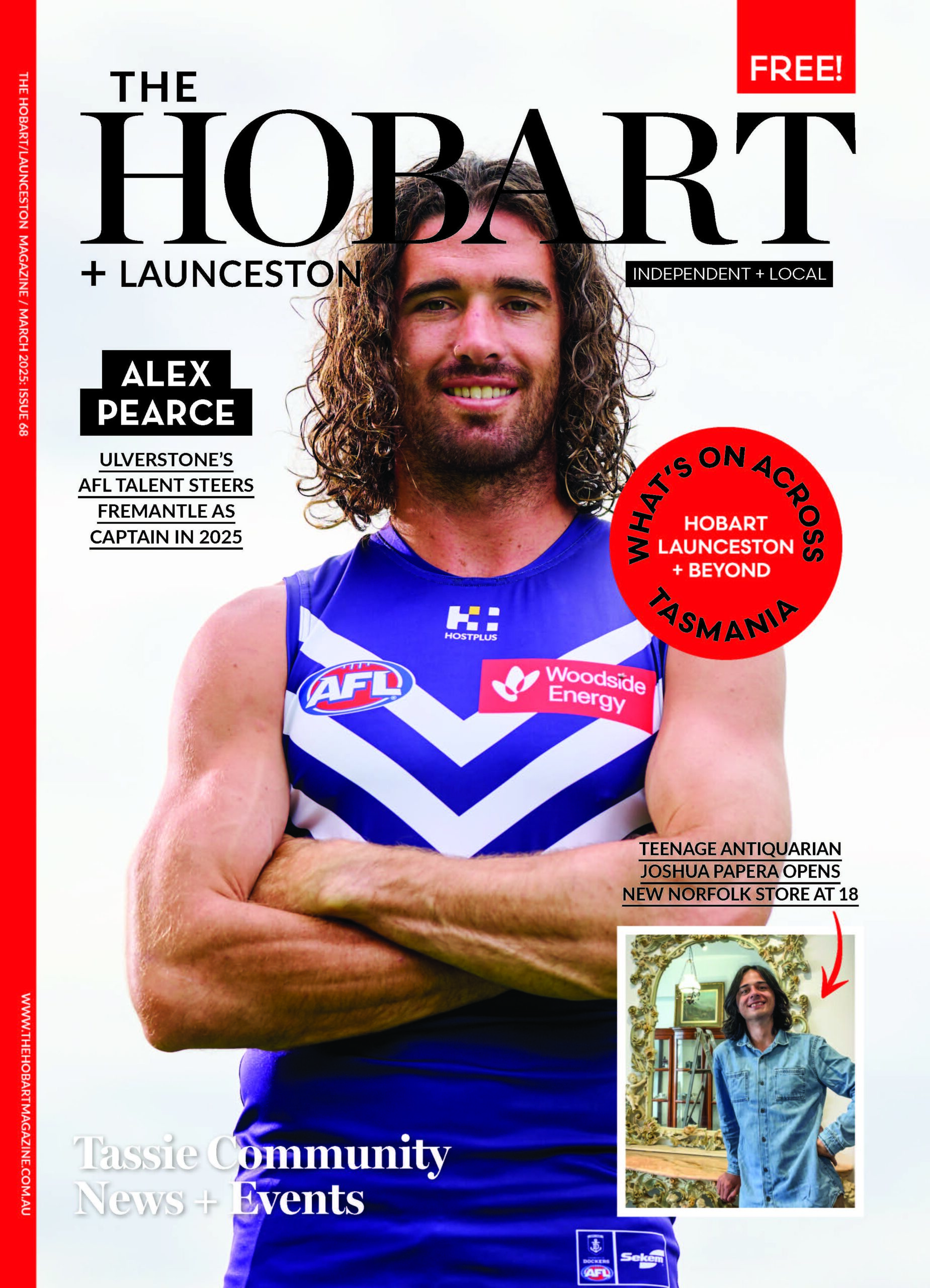Navigating Chaos in the ED Through Research
by The Hobart Magazine

Dr. Viet Tran is an accomplished emergency physician, researcher, and educator who has cared for over 30,000 patients throughout his career. His research works to improve emergency and trauma care in Tasmania, and has received almost $10 million in funding across 10 different project grants.
What inspired you to pursue a career in Emergency Medicine (EM)? EM was not my first choice! I’ve always considered myself good with my hands and aspired to be a surgeon throughout medical school. But after a few years as a junior doctor in various surgical units, it became clear that it wasn’t the lifestyle for me. It’s a grueling training program and credit to the surgeons who make it on and make it through the program. It’s a tough one!
Between the chaos, the day-to-day risks, the shift work and the sheer breadth of medicine, it’s a wonder anyone would want to specialise in EM. For me, it’s the special teamwork that keeps me wanting to stay in the Emergency Department (ED). Shout out to everyone who I’ve worked with in the Royal Hobart Hospital ED! Just as important as the team, is what brings us together – the patient. Perhaps the most unique and understated part of EM are the patients. You see, the Emergency Department is where you go when there is nowhere else that you can think of that can help. Therefore, we see patients at their most vulnerable to entrust us with their care. It’s a huge responsibility, greatly rewarding but equally devastating when the limits of modern medicine are reached.

What challenges do emergency departments in Tasmania face in providing consistent, high-quality care? What could we do better? Tassie EDs face the same issues as every other ED around the world. Currently, the greatest risk to patient safety and the single greatest threat to the security of healthcare systems internationally is the exponential growth of overcrowding in EDs. There’s no sugar coating it. Overcrowding is essentially when there are more patients than there are staffed beds to care for patients. This results in less ideal situations of care which leads to unsafe care and even avoidable deaths. And what can we do about it? That’s a much tougher question to answer, and one that health systems around the world have spent millions of dollars trying to figure out. The main issue is that overcrowding is not a problem created inside the ED, instead, it’s a culmination of many things not working efficiently or in coordination across the system itself. Broadly speaking, in Australia, you have private and public systems as well as state and federal systems for healthcare, all of which work mostly in silos. What’s often forgotten is that patients trying to coordinate care between siloes are often left floundering. When systems work together, efficiencies are made, patient care on whole is better and more timely and EDs are less crowded. This is a start.
How does your research address these challenges? ED overcrowding is a system-wide issue, yet EDs are often faced with expending all its energy advocating for solutions. This has been exhausting for the profession and a distraction for the quality that we could otherwise be focusing on within EDs. The research focus for the Tasmanian Emergency Medicine Research Institute is to revisit the impact that EDs make with each patient, to ensure we’re providing the best care possible, despite the constraints. It’s often mentioned that it takes 17 years between showing through research that something works well, to doing it at the bedside. We are planning on reducing this time frame to as little as five years.
You’re one of the speakers at TEDxHobart this year. What will you talk entail? I’m looking forward to taking everyone behind the curtains to take a peek at the complex engine room that is the ED and how, internationally, we’ve arrived at this place of extreme and unsafe overcrowding, dispel some myths and look at a way forward, together. You can grab tickets to watch at the Odeon on 11 May via www.tedxhobart.com.au.

